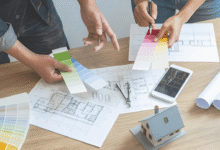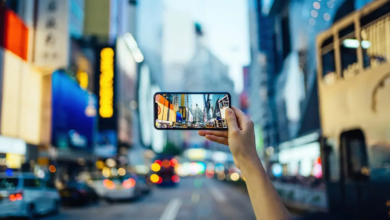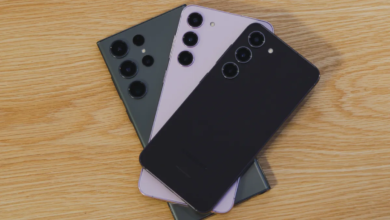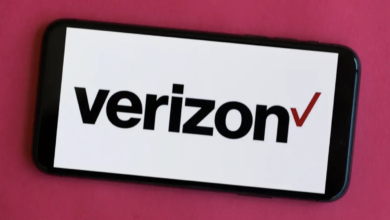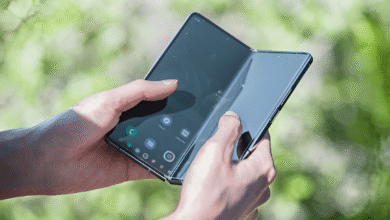How to Balance Tech Use and Mental Health
Balance Tech and mental health balance tips. Reduce screen time stress, improve digital wellness, and boost wellbeing with mindful tech use.

In today’s Balance Tech, technology is an inseparable part of our lives, offering convenience, connectivity, and entertainment. However, excessive tech use can negatively impact mental health, leading to stress, anxiety, and social isolation. Striking a balance between staying connected and maintaining well-being is crucial. This article explores practical strategies to manage screen time, foster healthy digital habits, and prioritize mental wellness in an increasingly tech-driven world. Excessive screen time, social media comparison, and constant notifications contribute to stress, anxiety, and sleep disturbances. Finding a healthy Balance Tech between staying connected and protecting mental health is more important than ever.
As we navigate the challenges of constant connectivity, it’s essential to recognize both the benefits and drawbacks of technology. By setting boundaries, practicing mindfulness, and engaging in offline activities, we can enjoy the advantages of tech without compromising our mental health. The following sections provide in-depth insights into achieving this balance for a happier, healthier life. This article explores practical strategies to achieve that balance, ensuring technology serves as a tool for enrichment rather than a source of distress.
How to Balance Tech Use and Mental Health
The Impact of Technology on Mental Health
Technology has revolutionized communication, work, and entertainment, but its overuse can contribute to mental health struggles. Studies show that excessive screen time, particularly on social media, is linked to increased anxiety, depression, and poor sleep quality. The constant influx of notifications creates a sense of urgency, making it difficult to disconnect and relax. Additionally, the comparison culture fostered by platforms like Instagram and Facebook can lead to low self-esteem and feelings of inadequacy.
Setting Healthy Boundaries with Technology
One of the most effective ways to balance tech use and mental health is by establishing clear boundaries. Designating tech-free times, such as during meals or before bedtime, helps reduce dependency on devices. Turning off non-essential notifications minimizes distractions, allowing for better focus and reduced stress. Another useful strategy is implementing the “20-20-20 rule” every 20 minutes, take a 20-second break to look at something 20 feet away to reduce digital eye strain and mental fatigue.
Physical spaces
Creating physical spaces free from Balance Tech, such as a no-phone bedroom, encourages relaxation and better sleep. Setting daily screen time limits using smartphone features or apps can also promote mindful usage. By consciously deciding when and how to engage with technology, individuals can regain control over their digital habits and improve overall well-being. By setting intentional boundaries, prioritizing offline experiences, and fostering self-awareness, individuals can harness technology’s advantages without letting.
Mindful Tech Consumption for Mental Wellness
Mindfulness plays a crucial role in Balance Tech use and mental health. Instead of mindlessly scrolling, practicing intentional engagement with technology can enhance its benefits while reducing harm. Techniques such as digital detoxes periods of complete disconnection help reset the brain’s dependency on constant stimulation. Engaging in activities like meditation, journaling, or outdoor walks without devices fosters presence and reduces stress.
Technology offers Valuable Tools
While technology offers valuable tools for productivity and connection, its addictive nature can disrupt real-life interactions. The dopamine-driven feedback loops of likes, comments, and messages keep users hooked, often at the expense of face-to-face relationships. Over time, this can lead to social isolation and emotional exhaustion. Recognizing these effects is the first step toward developing a healthier relationship with technology.
Positive Digital Environment
Another approach is curating a positive digital environment. Unfollowing accounts that trigger negative emotions and subscribing to uplifting content can improve online experiences. Additionally, replacing passive consumption with active participation such as creating art, writing, or learning new skills online makes tech use more fulfilling. By being mindful of how and why we use Balance Tech, we can transform it into a tool for enrichment rather than a source of distress.
The Role of Offline Activities in Mental Health
Spending time away from screens is essential for mental and emotional well-being. Engaging in hobbies such as reading, exercising, or gardening provides a healthy counterbalance to digital consumption. Physical activity, in particular, releases endorphins that combat stress and improve mood. Socializing in person strengthens relationships and reduces feelings of loneliness that often arise from virtual interactions, it dominate their mental and emotional well-being.
Nature Role in Mental Health
Nature also plays a significant role in mental health. Studies suggest that spending time outdoors lowers cortisol levels and enhances cognitive function. Whether it’s a short walk in the park or a weekend hiking trip, disconnecting from technology to reconnect with nature can have profound benefits. Prioritizing offline experiences helps create a more Balance Tech and fulfilling lifestyle. In our hyper-connected world.
Teaching Healthy Tech Habits to Children and Teens
Children and teenagers are especially vulnerable to the negative effects of excessive screen time. Parents and educators play a key role in modeling healthy tech habits and setting guidelines. Encouraging outdoor play, creative activities, and family time without devices fosters a balanced approach to technology. Open discussions about online safety, cyberbullying, and the importance of real-world connections help young users navigate the digital landscape responsibly.
Technology Empowers
Setting screen time limits and using parental controls can prevent overuse while still allowing for educational and recreational tech use. Teaching kids to recognize when they feel overwhelmed by technology empowers them to self-regulate. By instilling these habits early, we can help future generations maintain a healthier relationship with technology, Balance Tech has become an essential part of daily life, shaping how we work, communicate, and entertain ourselves.
Read More: How Smart Grids Are Transforming American Cities
Conclusion
Balance Tech use and mental health is an ongoing process that requires awareness, discipline, and intentional choices. While technology offers incredible benefits, its overuse can take a toll on emotional well-being. By setting boundaries, practicing mindfulness, and engaging in offline activities, individuals can enjoy the advantages of the digital world without sacrificing mental health. By setting intentional boundaries, prioritizing offline experiences, and fostering self-awareness.
Balance Tech is not to eliminate technology but to use it in a way that enhances life rather than detracts from it. By adopting healthier habits and encouraging others to do the same, we can create a more balanced, fulfilling relationship with technology one that supports both productivity and peace of mind, individuals can harness technology’s advantages without letting it dominate their mental and emotional well-being.
FAQs
How does excessive screen time affect mental health?
Excessive screen time can lead to anxiety, depression, poor sleep, and reduced attention span due to constant stimulation and blue light exposure.
What are some signs of Balance Tech addiction?
Common signs include inability to reduce usage, neglecting responsibilities, irritability when offline, and prioritizing screen time over real-life interactions.
How can I reduce my Balance Tech usage without feeling disconnected?
Set specific time limits, engage in offline hobbies, and use tech intentionally rather than habitually to stay connected without overuse, access to information, and digital convenience.
Can technology be beneficial for mental health?
Yes, when used mindfully, technology can provide mental health resources, therapy apps, and supportive online communities. The key lies in mindful tech consumption recognizing when digital engagement enhances life.
How can parents help kids develop healthy tech habits?
Parents should model balanced tech use, set screen time limits, encourage offline activities, and discuss online safety openly with their children, and when it becomes harmful.
